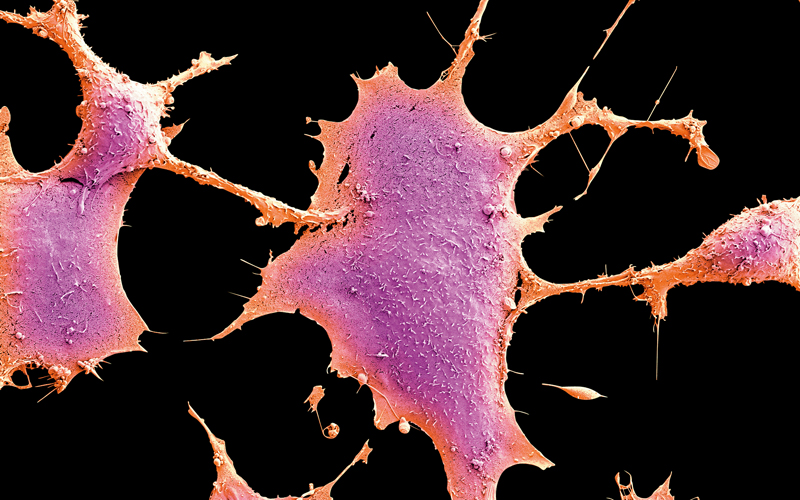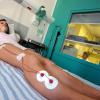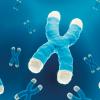Dr Isaac Garcia-Murillas discusses a new blood test that can predict if breast cancer will return years before the disease shows on scans.

At a glance
- A new liquid biopsy has been developed that looks for 1800 mutations in the patients’ blood that are released by cancer cells.
- The team screened 78 patients with early breast cancer. They found that the presence of ctDNA was associated with recurrence: the residual disease was detected in all 11 patients who relapsed.
- There is hope that the technique is transferable to any solid tumour where you can identify enough mutations.
Data from Cancer Research UK shows that breast cancer remains the most common cancer in the UK, accounting for 15% of all new cancers. In 2017–2019, almost 57,000 new cases of the disease were recorded each year, and projections suggest this could reach 70,000 by 2040.
In terms of mortality, the disease was responsible for 11,500 deaths a year in 2017–2019, accounting for 7% of all cancer deaths. The good news is that breast cancer mortality rates have fallen by 41% since the 1970s and are projected to fall a further 13% by 2040.
The mortality rates have dropped thanks to a range of innovative screening, diagnostic and treatment programmes that have helped to ensure that the disease is caught earlier, giving a better chance of successful treatment. Work to bring those rates down even further is not standing still: a prime example of this came at the recent annual meeting of the American Society of Clinical Oncology, where researchers presented the results of a trial of a liquid biopsy that can accurately predict which breast cancer patients will relapse.
Developing the new test
The work on the highly sensitive blood test was carried out at the Breast Cancer Now Toby Robbins Research Centre at the Institute of Cancer Research in London. The objective was to confirm the presence of circulating tumour DNA (ctDNA) that cancer cells release into the bloodstream. This marker of molecular residual disease usually exists in such small quantities it is undetectable by routine scanning. But with the liquid biopsy the research team found they could predict the recurrence of the cancer months, even years, in advance. Catching the re-emergence of the disease that early could have huge implications for follow-up treatment.
Dr Isaac Garcia-Murillas, Staff Scientist in the Molecular Oncology Group at ICR and first author of the research, says while the basic technology used to develop the test is not new, the team has given it a novel twist: “ctDNA has already been worked on for the last decade or so, but the approach we have used this time is a little bit supercharged, let’s say. Previously we have been using whole-exome sequencing mostly, and that identifies between 16 and 50 mutations to track in the ctDNA. This time we have used whole-genome sequencing and the number of mutations we look for is up to 1800. In our case, it has been around 1400 as a median. With an increase from around 15 to 1400, we’re looking at many, many more mutations.”
Major implications
This much-enhanced version of the ctDNA test has had two major implications for the research carried out by Garcia-Murillas and his colleagues. “First, is the ability to detect ctDNA at baseline, which is the blood samples that the patient gives before initiation of any treatment,” he says. “With current technologies, we were around a 51% to 84% detection rate. With this new technology, we are at 98%.”
The team screened 78 patients with various types of early breast cancer, using blood samples taken at diagnosis and at various points during and after treatment for five years. They found that the presence of ctDNA after surgery, or any time afterwards, was associated with recurrence: the residual disease was in fact detected in all 11 patients who relapsed.
The second implication is the improved lead time for detecting the faint traces of the renewed disease. “With the current technologies, we are able to predict which patients are going to relapse with a lead time of between 8.9 months and 11.7 months. With this new technology, we are able to identify these patients with a lead time of 15 months. So it’s around three months earlier than previously. This is because the technique is so much more sensitive.”
This heightened sensitivity even managed to detect ctDNA in one patient a quite astonishing 41 months in advance of a scan that confirmed the cancer had returned. Of the 60 women in the trial who had no residual ctDNA found in their blood, not one relapsed during the follow-up period.
Whole-genome sequencing
The research carried out at ICR has been funded by the charity Breast Cancer Now and Personalis, the US makers of the NeXT Personal test. This molecular residual disease technology employs whole-genome sequencing on patient samples to produce personalised molecular profiles. Did the whole-genome approach present any major challenges?
“Whole-genome sequencing is not difficult,” says Garcia-Murillas. “The problem is being able to confidently call the mutations that you’re going to track, to identify the variance, and to have various strong computational approaches. There’s a lot of computational work in identifying confidently those variants in plasma and, once you find that mutation, being sure that it is a true positive, above the background noise, and it’s not a false positive.” Powerful statistical analysis techniques developed by Personalis have helped to cut through that noise.

What now?
The big task now facing the researchers is translating these hugely promising results into clinical application. “If you are able to identify these high-risk patients who are going to relapse earlier,” says Garcia-Murillas, “you potentially could intervene a bit earlier or you could give these patients novel therapies to try to cure them. What we saw here with our research is technical validity, but we haven’t seen clinical utility yet. By identifying these patients early and intervening early, you want to affect outcomes. That’s why we’re trying to do that now and that’s the exciting bit.”
Could this new way of detecting ctDNA, by using whole-genome sequencing, be used for other forms of cancer? “Absolutely,” says Garcia-Murillas. “In the same way that we have seen PCR or NGS technology applied to other solid tumours, we will see whole-genome sequencing applied to other solid tumours. We are at the forefront of this and are solving it for the first time. But you are going to see that this is transferable to any solid tumour where you can identify enough mutations, so as well as breast cancer, colorectal, lung, prostate and pancreas cancers.”
Explore further
- The Institute of Cancer Research’s information on the research: bit.ly/3KEpL5D
- Biomedical Scientist feature on the future of liquid biopsies: bit.ly/3x9geR9
- Isaac Garcia-Murillas’ profile page on ResearchGate: bit.ly/45rlnRi
Image Credit | Science Photolibrary



